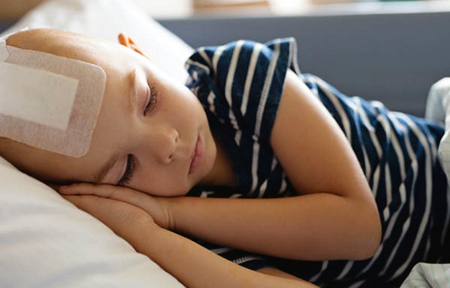What is narcolepsy and how is it treated - list of approved drugs


Narcolepsy is a neurological disorder with insurmountable episodes of sleepiness during the day. The main manifestation of the disorder is commonly accompanied by poor night sleep, catalepsy (sudden rigidity of certain muscles), sleep paralysis (loss of ability to move or speak when waking up or falling asleep), and sleep-related vivid hallucinations.
The disorder can be of two types:

- Type 1 (NT1), narcolepsy with catalepsy, is distinguished by the episodes of catalepsy. It is also distinguished by very low levels (≤ 110 pg/ml) of hypocretin 1 in cerebrospinal fluid, severe drop of level of hypocretin neurons in the hypothalamus;
- Type 2 (NT2), narcolepsy without catalepsy, is distinguished by the lack of episodes of catalepsy, normal levels of hypocretin in the cerebrospinal fluid, less pronounced drop of hypocretin neurons level.
It is assumed that type 1 disorder develops as a result of both genetic predisposition and environmental factors that determine the incorrect defense response of the immunity against hypocretin neurons.
The causes of type 2 disorder are still unknown.
Patients experience a lack of vigilance and sustained attention, slower reaction times, increased error rates, and difficulty in performing complex, monotonous, and lengthy tasks.
Potential complications of narcolepsy include raised risks of road traffic accidents, trauma, bone fractures, falls (due to catalepsy and/or sudden falling asleep).
Epidemiology of the disorder

The disorder most commonly affects kids, teens, and young adults: the disease usually starts to manifest itself between the ages of 10–20, although it can happen at any age.
On average, it takes 5-15 years from the moment of the onset of the first symptoms to the diagnosis.
The second peak in cases of narcolepsy occurs between the ages of 30–39 years.
Morbidity, risk factors and the incidence
The frequency of the disorder in the world is within the range of 0.025–0.05%. It varies by age group, geographic region, and the pandemic of influenza A serotype H1N1, the most common type of influenza. Possible explanations include differences in genetic risk factors and exposure to environmental factors, age, and certain immune stimuli:
- For first-line relatives, the lifetime risk of the disorder is 1–2%;
- For monozygotic twins is 25–31%.
Age
Narcolepsy most commonly affects kids, teens, and young adults (10–20 years old). The first spike of the disorder manifestation occurs at 15 years of age, and then at 35 years.
Immune triggers
Streptococcal infections are possibly associated with a raised risk of developing narcolepsy. A similar association was found for the 2009 Pandemrix influenza vaccine.
Etiology and pathogenesis of narcolepsy
The minor possible contributors to the development of narcolepsy include:

- Sarcoidosis;
- Multiple sclerosis and other demyelinating diseases;
- Genetic neurodegenerative diseases;
- Stroke;
- Tumors;
- Agenesis of the corpus callosum;
- Neurocysticercosis;
- Brain injury;
- Limbic encephalitis;
- Paraneoplastic syndrome;
- Guillain-Barré syndrome;
- Congenital malformation of the brain;
- Niemann's disease - Pick type C.
Narcolepsy treatment
In almost half of the patients, sleepiness and cataplexy substantially affect daily life, including school, work, marriage, or social life.
Patients with narcolepsy can benefit from regular and adequate sleep schedules, scheduled naps, avoiding drugs that cause daytime sleepiness or insomnia, and by attending psychosocial support groups. Screening for depression, hypertension, and obesity is an important component of maintaining a healthy lifestyle.

Most of the formulations offered for the therapy of the disorder are directed against either daytime sleepiness or cataplexy. Therefore, many patients with both symptomatic conditions require more than one medication to treat narcolepsy.
Despite optimal therapy, few patients with narcolepsy ever feel fully awake. The goal of therapy is to raise vigilance to such an extent that performance and safety are adequate for important activities such as school or work. After optimum therapy has been achieved, the severity of residual sleepiness should be assessed using the Epworth Sleepiness Scale (ESS) or the Maintenance of Wakefulness Test (MWT). Patients who experience persistent sleepiness should be counseled to avoid potentially dangerous activities such as driving a car.
For individuals with severe drowsiness requiring medication, it is suggested that Modafinil be used as primary therapy rather than methylphenidate or amphetamine. This is due to the fact that this medication is less likely to cause adverse reactions and in general causes milder adverse effects (if they occur) than traditional stimulants.
Solriamfetol, an oral selective dopamine and norepinephrine reuptake inhibitor with awakening effects, appears to have similar side effects to Modafinil and maybe a reasonable first-line treatment option for drowsiness. When appointing medications that promote wakefulness, it is necessary to warn patients about the risk of serious cardiovascular and psychiatric adverse reactions. It is recommended that your heart rate and arterial pressure be monitored at every doctor's visit, since hypertension is common in individuals with the disorder and can be aggravated by most medications (especially, amphetamines).
The first-line cataplexy group includes drugs that suppress REM sleep, such as Fluoxetine, and Atomoxetine. However, Venlafaxine in a sustained release formulation is preferred.
If sleepiness or cataplexy does not improve with the above medicines, sodium oxybutirate, also known as sodium oxybate, can be used.
People with this sleepiness disorder are at risk of car accidents increased three to four times, while more than a third of patients had an accident just because of drowsiness. Physicians should openly discuss both these risks with patients and strategies to reduce them.
Drugs used for the treatment of narcolepsy – uses, dosages, side effects explained
Non-pharmacological treatment
There are a number of non-pharmacological interventions that can help with narcolepsy. But most patients still need appropriate medications to lower sluggishness and cataplexy.
Snooze and sleep hygiene

Patients with narcolepsy are advised one or two quality 20-minute naps, although some patients benefit exclusively from an extended sleep. For example, taking a nap at lunchtime (13: 00-14: 00 hours) often leads to an improvement in wakefulness and alertness for a period of one to three hours, thereby reducing the need for stimulants in the afternoon. If this helps, naps are indicated at work or school.
Sleep deprivation can aggravate the symptoms of narcolepsy, so a regular and adequate sleep schedule should be followed.
Medicines and substances
Certain drugs and substances should be avoided because of their potential to worsen the symptoms of narcolepsy. Among those that can increase daytime sleepiness: benzodiazepines, opiates, antipsychotics (neuroleptics), alcohol. Some, such as theophylline or excess caffeine, can cause insomnia, which ultimately translates into increased daytime sleepiness.
Prazosin and other alpha-1 adrenergic receptor antagonists worsen cataplexy symptoms.
Psychosocial support
Patients with narcolepsy face a variety of psychosocial and work-related problems throughout their lives. They also have an additional burden of overcoming misconceptions about the causes and involuntary nature of narcolepsy symptoms.
A common misconception (even among those providing medical care) is that sleep attacks and cataplexy are manifestations of poor motivation, denial, or avoidance. Therefore, patients are usually advised to participate in support groups that focus on coping skills and identifying social assistance resources in solving administrative and medical issues.
Post by: Natalie Keller, M.D. General Health Centre, Minneapolis, Minnesota
(Updated at Apr 14 / 2024)
Modafinil articles:
Some of the trademarks used in this Web Site appear for identification purposes only.
All orders are reviewed by a licensed physician and pharmacist before being dispensed and shipped.
The statements contained herein are not intended to diagnose, treat, cure or prevent disease. The statements are for informational purposes only and is it not meant to replace the services or recommendations of a physician or qualified health care practitioner. If you have questions about the drugs you are taking, check with your doctor, nurse, or pharmacist.